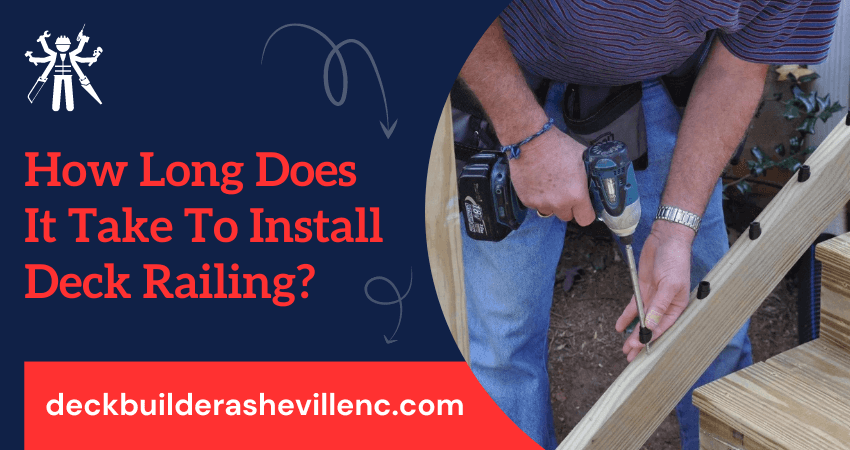Building platform steps for a deck can seem like an intimidating project. After all, decks are often considered important investments and many homeowners worry about making sure the structure is safe and secure. However, with careful planning and attention to detail, it is possible to build platform steps that will add value not only to the look of your deck but also enhance its safety and stability.
In this blog post, we will provide step-by-step guidance on how to get started building platform steps for your deck or patio area. So you can rest easy knowing that you have created a safer outdoor living space for yourself or your family!
Things to Consider Before Building Platform Steps For Your Deck
List and describe the materials needed to build platform steps
The materials needed to build platform steps include the following:
- Wood: You will need wood boards of various lengths and widths, depending on the size of your project. Be sure to select lumber that is pressure-treated, weather-, decay- and insect-resistant for outdoor projects.
- Hardware: You will need galvanized screws, nails, lag screws and brackets for the build.
- Other Materials: Depending on your project you may need other materials such as masonry anchors for attaching to concrete surfaces, or wood sealers or paint for finishing off exposed wood.
Finally, you will need a variety of tools including saws, drills, levels and hammers for the build. Following a set of instructions or plans, you can easily assemble your platform steps with these supplies.
Tools that will be required for the project?
Tools required for the project include:
- Drills and drill bits
- Mitre saws or jigsaws
- Circular saws
- Levels
- Framing squares
- Tape measures
- Chisels
- Hammers and mallets
- Nail sets, screwdrivers, pliers and wrenches
- Wheelbarrow and shovels for mixing concrete
- Safety glasses and hearing protection
Tips on where to purchase materials and tools
When purchasing materials and tools for your project, it is important to shop around and compare prices. It is best to go with a reputable retailer or manufacturer so you know that the products you are buying will be of high quality and last for many years. Many hardware stores have pre-cut lumber available for purchase, saving you time from having to cut the pieces yourself. Some online retailers offer great deals on supplies and tools needed for your project.
Finally, always remember to take proper safety precautions when working with power tools and other heavy materials. Wear protective clothing, eye protection and hearing protection when using power equipment. Following these tips can help ensure a successful build of your platform steps.
Importance of planning and measuring before starting the project
It is essential to plan and measure before beginning any project, especially when building platform steps. This will ensure that the result looks professional and fits properly in the space that you have allocated for it.
Before starting, draw a diagram of your deck area so you can determine the exact measurements and angles needed for the build. Take into account factors such as the height and size of any stairs, ramps, or platforms that will be included. Once you have written out these measurements, double-check them to make sure they are accurate.
How to measure the height and width of the steps?
Once you have determined the overall size of your project, it is time to measure the height and width of each step.
- Start by measuring from the ground up to determine the total rise or height of the steps. This can be done with a tape measure. Make sure to add an extra inch or two for clearance between each step.
- Next, measure the width of each step. This can be done by measuring from one side to the other, ensuring that there is enough room for your feet without being too wide or narrow.
- Finally, take into account any additional measurements needed for handrails, posts and ramps that may be included in the project.
Follow these tips and you will be sure to create the perfect platform steps for your project. With careful planning and measurement, you can build a structure that is both functional and aesthetically pleasing.
Noted: Get Free Cost Estimation For Custom Deck Building Service!
7 Steps Of Building Platform Steps
Once you have gathered all of the necessary tools and supplies, you will be ready to begin constructing your platform steps.
Step 1: Measure and Mark Out the Step Locations
The first step in building platform steps is to measure the locations for each step. Mark out these locations on both sides of your deck using a tape measure and a carpenter’s square. Make sure that all of your measurements are precise so that the steps will fit correctly.
Step 2: Cut the Stringers
Once you have marked out the location of each step, it’s time to cut the stringers—the long pieces of wood that will run horizontally along both sides of your stairs. The number of stringers required for each step depends on the size and shape of your project. For instance, if you have a single box-shaped staircase then you will need two stringers—one on each side—but if your project consists of multiple steps and landings then you will need more. Measure and cut the stringers using a mitre saw or jigsaw and make sure to use pressure-treated wood for any parts that will be exposed to the elements.
Step 3: Cut the Treads and Risers
Once your stringers are cut, you can begin to cut the treads and risers for each step. Measure out the size of each tread and riser based on your measurements from Step 1, then use a circular saw or jigsaw to cut them out. Be sure to use pressure-treated wood that is suited to outdoor conditions.
Step 4: Assemble the Steps
Using the measurements and cuts from Steps 2 and 3, assemble each tread and riser with your stringers using galvanized screws or lag screws. Make sure that all of the pieces are secure and level before continuing to the next step.
Step 5: Install Anchors (if Necessary)
If your platform steps require masonry anchors for attaching them to a concrete surface, then now is the time to install them. Use an appropriate drill bit to bore holes into the concrete and attach your anchors using the correct screws and fasteners.
Step 6: Seal and Stain (Optional)
Once your platform steps are assembled, you may want to seal the wood with a waterproofing sealer or stain it for aesthetic purposes. If so, now is the time to do it. Allow the sealer or stain to dry completely before continuing.
Step 7: Install the Handrails
If your project includes handrails, now is the time to install them. Make sure that they are securely attached and level with the steps before continuing.
10 Tips To Maintain Deck Steps?
- Clean the deck regularly: Use a pressure washer or hose to clean off dirt and debris that can accumulate on your deck over time, making sure to keep the water pressure low enough not to damage the wood. If you don’t have access to a pressure washer, use a brush with an appropriate cleaning solution and warm water to scrub away dirt and grime.
- Repaint and refinish the deck: To protect your deck from the elements, it’s important to repaint or refinish the wood every two to three years. Pick a durable exterior paint that is designed for decks and apply multiple coats to ensure maximum protection. Make sure you properly prepare the wood before painting by sanding it down and removing any loose nails or screws.
- Seal the deck: Sealing your deck will help protect it from moisture and weather damage, prolonging its life and keeping it looking as good as new. Use a sealant designed specifically for decks and apply it every one to two years depending on the climate.
- Trim the trees: Make sure any trees near your deck are trimmed regularly so they don’t scratch or damage the wood. It’s also a good idea to trim away any overhanging branches as these can block sunlight and cause mold and mildew to form on the deck.
- Inspect the deck: Regularly inspect your deck for signs of damage such as rotting wood or loose screws. If you notice any problem areas, address them immediately to ensure your deck stays safe and secure.
- Check for pests: Wood-eating insects like termites can cause serious damage to decks if left unchecked. Have your deck inspected for pests annually to make sure it stays protected from these damaging invaders?
- Re-stain the deck: If you want to keep your deck looking good, apply a new coat of stain every two or three years. Choose a stain that is designed for outdoor use and will provide optimal protection from the elements. Make sure you properly prepare the wood before staining it and follow all the manufacturer’s instructions.
- Store furnishings safely: If you have any outdoor furniture or decorations on your deck, make sure to store them away when not in use. This will help protect them from damage caused by rain and wind, as well as reduce the risk of slipping or tripping hazards. If you have to leave them outside, make sure they are securely placed and protected from the elements.
- Keep it clear: Make sure your deck is kept free of clutter so that it’s easy to walk around and enjoy. This will also reduce the risk of someone tripping or slipping while walking around the deck.
- Repair any damages: If you notice any signs of damage such as loose boards, cracks, or chipped paint, make sure to address them immediately. Even small issues can lead to bigger problems if not fixed on time.
Following these tips will help keep your deck looking great and safe for years to come. With a little care and maintenance, you can ensure your deck remains in good condition for many seasons to come!
By taking the time to properly maintain your deck, you can make sure it looks great and is safe for you and your family. A well-maintained deck will help keep your outdoor space looking beautiful and inviting. With a little TLC, you can keep your deck in good condition and looking great for years to come!
Final Words
Building platform steps for a deck is not a difficult project if you have the right tools and supplies. Developing an understanding of the materials, processes and techniques is key to building a lasting, safe structure that will be enjoyed for many years. When constructing your platform step, be sure to consult local laws and regulations.
This will ensure your construction is up to code and as safe as possible. Additionally, it’s important to consider the size of the deck and think about how high the step has to go.
Taking these points into account when planning your build will help ensure that the job is completed properly and safely in no time at all. And once completed, you’ll be able to enjoy the rising sun or take shelter from a late-day summer shower with beautiful views surrounding you each day on your wonderful new deck!




